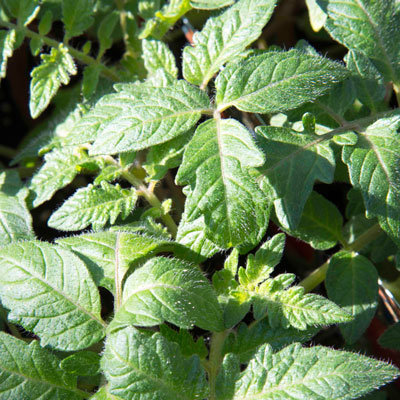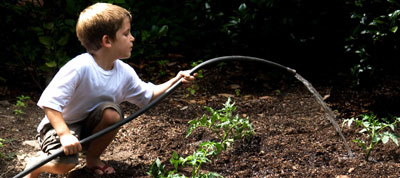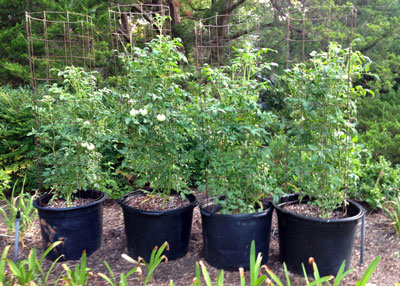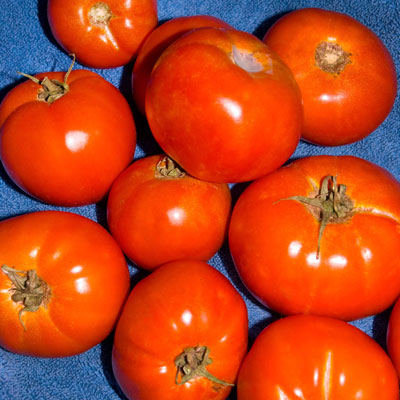The Case for Fall Tomatoes
I encouraged my Facebook friends to start asking their favorite nurseries now if they would be offering tomatoes for the fall garden toward the end of this month or into early July. There are years when it’s hard to find transplants early enough, but that’s the proper time for all of Texas except the Gulf Coast and South Texas. Let’s list some numbers.

Photo: Look at the quality of these sliced fall tomatoes from the Sperry home garden!
Fall tomatoes start now!
Yes – you have to plant transplants in the middle of the summer in order for them to have time to yield heavily and for the fruit to mature before the first killing freeze. That means the last week of June and first week of July in North Texas, and a week or 10 days later in South Texas.

Photo: If you’re lucky, your favorite nursery will have transplants of the best varieties waiting for you in the next couple of weeks. Call ahead, though. That’s often not the case.
Let’s assume the average date of your first killing freeze is November 20, as it is in Dallas/Fort Worth where I garden. (Not many people actually live in my garden, so I’ll let you make your own adjustments.)
Let’s do the math backwards…
• Most tomato varieties produce their first fruit after 70 or 75 days. That’s 2-1/2 months, so we’re back to September 1.
• But you don’t want just one fruit – you want at least six weeks’ worth of production. That puts you back in mid-July.
• We could have an early first freeze, plus cooler weather means the plants grow more slowly, so add in another two or three weeks of time, just to be sure. There you are: late June, early July.
• As mentioned, you could slide those dates two weeks later in South Texas.
What varieties are best?
When I put this tip up on Facebook last week, several people asked what varieties I would suggest. Actually, if people would just always plant small to mid-sized tomatoes in Texas, whether in spring or for fall, we’d have much more productive gardens for our efforts.
Sure, some varieties are slightly better than others, but the small and mid-sized types that set better in the warm weather of late spring/early summer also set better well into late fall. Large tomatoes are just not good in Texas. Cherry, pear, Sweet 100, Porter, Roma, Early Girl, Super Fantastic and similar types will all do well for you. Heirloom tomatoes tend to be weak producers.
You could take cuttings from your best and healthiest spring plants. They root quickly, and you’ll have plantable transplants within 2 or 3 weeks. That should be ample time.
Getting new plants started…
Acclimate the plants to full, hot sun before setting them into well-prepared garden soil.

Photo: Grandson Alex waters our new tomato transplants several summers ago.
Still, provide each plant with temporary shade from a piece of cardboard folded and placed over it like a small tent. Put stakes beneath it so it can’t weight down and crush the plant. Pull it back a bit more each day over a period of four or five days.

Photo: We grow our fall tomatoes in 7-gallon nursery pots filled with high quality potting soil. Note the wire cages for support.
Grow your tomatoes in wire cylinders. I use cages that are 4 feet tall and 17 inches in diameter, and I make them from concrete reinforcing wire. Push shoots inside the cages to keep the vines and the fruit off the ground.
Apply a water-soluble, high-nitrogen fertilizer to the plants to keep them growing actively.

Photo: Fall harvest is free of cracking, sunscald and other typical summertime blemishes.
So, please trust me on this one…
After just one year of growing fall tomatoes you’ll be convinced. Fall tomatoes grow at a time when early blight and spider mites won’t wreck the plants. They mature at a time when 100-degree temperatures won’t cause them to crack, sunscald and split. Color and flavor are better – they’re just all-around more rewarding.
